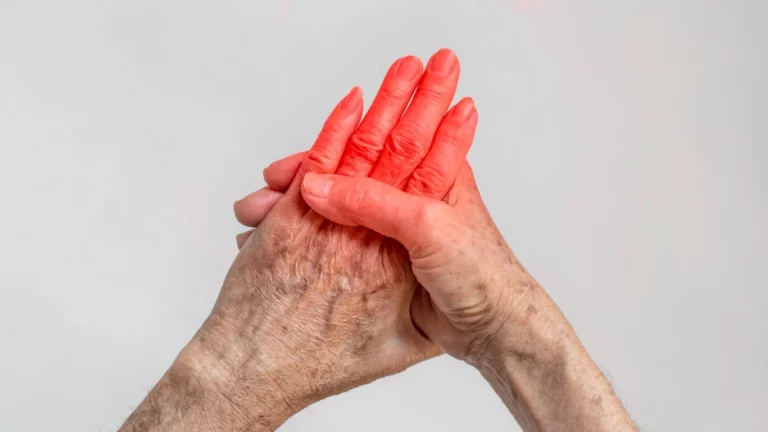Powerful Insights on GERD and Postnasal Drip Connection You Must Know
Hey there! If you’ve ever found yourself wondering about that annoying tickle in your throat combined with some persistent heartburn, you’re not alone. From my experience working as a Medical Assistant in a busy Gastroenterology Clinic, I’ve seen so many patients ask about the GERD and postnasal drip connection. It turns out, these two issues can often go hand-in-hand, and understanding how they relate can make a big difference in managing symptoms effectively. So, let’s dive into what exactly ties gastroesophageal reflux disease (GERD) and postnasal drip together, why they bother you so much, and what you can do about it.
The Surprising Link Between GERD and Postnasal Drip

GERD, or gastroesophageal reflux disease, is a condition where stomach acid frequently flows back into the tube connecting your mouth and stomach (esophagus). This acid reflux doesn’t just cause the typical burning sensation in your chest; it can also irritate your throat and nasal passages. This irritation is where postnasal drip comes into play. Postnasal drip happens when excess mucus accumulates in the back of your nose and throat, often making you feel like you constantly need to clear your throat or cough.
From my daily encounters at the clinic, I’ve noticed a pattern: patients with GERD often complain about that stubborn mucus buildup and throat clearing. Why? Because acid reflux can inflame the lining of the throat, triggering your body’s natural defense mechanism—producing more mucus to protect those irritated tissues. This mucus then drips down, causing the uncomfortable postnasal drip sensation.
How GERD Triggers Postnasal Drip
Understanding the mechanism behind this connection can shed light on why managing GERD symptoms might also help relieve postnasal drip. Here’s what happens:
- Stomach acid backs up: When the lower esophageal sphincter (LES) is weak or relaxes inappropriately, acid escapes from the stomach into the esophagus.
- Throat irritation: The acid can reach the throat, causing inflammation and irritation of the lining (laryngopharyngeal reflux).
- Increased mucus production: Your body responds by producing mucus to soothe and protect these sensitive areas.
- Mucus drips down: This extra mucus trickles down the back of your throat, causing the feeling of postnasal drip.
This cycle can become quite uncomfortable and persistent if left unmanaged, which is why many people seek medical advice when these symptoms overlap.
Recognizing Symptoms: When GERD and Postnasal Drip Collide

Based on my hands-on experience, patients often confuse their symptoms or don’t realize both issues are connected. Here’s a quick rundown of common symptoms that might suggest you’re dealing with both GERD and postnasal drip:
- Frequent throat clearing or a sensation of mucus stuck in your throat.
- Persistent cough, especially when lying down or at night.
- Burning sensation or discomfort in your chest or throat.
- Hoarseness or voice changes.
- Chronic sore throat that doesn’t seem to go away with typical treatments.
- Excessive mucus dripping down your throat, especially after eating certain foods.
When I talk to patients, I always ask detailed questions about their symptoms and lifestyle because sometimes the culprit can be hidden in simple daily habits — like late-night snacking or acidic food choices. Recognizing these signs early helps in tailoring the right treatment plan that addresses both conditions.
Managing GERD and Postnasal Drip: Practical Tips That Actually Work

After seeing so many patients struggle with the frustrating combo of GERD and postnasal drip, I can tell you that managing these symptoms isn’t just about popping antacids and hoping for the best. It’s a blend of smart lifestyle tweaks, knowing your triggers, and sometimes medical help. Let me walk you through some of the most effective strategies that I’ve found really help people feel better.
Simple Lifestyle Changes Make a Big Difference
One of the first things I always suggest is to take a closer look at daily habits. Small changes can reduce acid reflux and soothe that pesky postnasal drip feeling. Here’s what usually helps:
- Eat smaller, more frequent meals: Overloading your stomach can cause more acid to back up. Smaller portions mean less pressure on the LES (that valve that keeps acid down).
- Avoid trigger foods: Acidic or spicy foods, caffeine, chocolate, and even mint can relax the LES and worsen reflux symptoms.
- Don’t eat right before bed: Give yourself at least 2-3 hours after eating before lying down. Gravity is your friend here.
- Elevate your head while sleeping: Raising the head of your bed by 6-8 inches can prevent acid from creeping up during the night.
- Stay hydrated: Drinking water helps thin mucus and flush irritants away from your throat.
- Quit smoking: This one’s huge. Smoking weakens the LES and irritates your throat lining.
- Maintain a healthy weight: Extra weight, especially around the abdomen, puts pressure on the stomach and LES, making reflux more likely.
From personal experience, I’ve noticed patients who commit to these changes often report not just fewer reflux symptoms but also significant relief from that constant throat clearing and mucus buildup.
When Over-the-Counter Remedies Help
In addition to lifestyle shifts, over-the-counter (OTC) options can provide some much-needed relief, especially early on. Some of the common choices I’ve seen work well include:
- Antacids: These neutralize stomach acid and can quickly ease heartburn.
- H2 blockers: Medications like ranitidine (though less common now) reduce acid production over a longer period.
- Proton pump inhibitors (PPIs): Drugs such as omeprazole lower acid production more effectively and are often prescribed for more persistent GERD symptoms.
- Nasal saline sprays: These help clear mucus and reduce irritation in the nasal passages contributing to postnasal drip.
That said, it’s really important to check in with a healthcare provider before jumping into long-term medication use. Sometimes what seems like simple reflux can hide other conditions that need a closer look.
When to See a Doctor: Signs You Shouldn’t Ignore

In the clinic, I often emphasize that while many symptoms can be managed at home, there are times when professional evaluation is essential. Here are some red flags that shouldn’t be overlooked:
- Difficulty swallowing or painful swallowing
- Persistent hoarseness or voice changes lasting more than two weeks
- Unexplained weight loss
- Severe or worsening chest pain
- Chronic cough that doesn’t respond to typical treatments
- Blood in saliva or mucus
At that point, doctors might recommend further testing such as an endoscopy, pH monitoring, or allergy tests to pinpoint the exact cause of symptoms. In my time assisting gastroenterologists, I’ve seen how early diagnosis can make a huge difference in long-term outcomes.
Additional Medical Treatments and Therapies
For some patients, lifestyle changes and OTC meds just aren’t enough. In those cases, more targeted medical interventions may come into play:
- Prescription medications: Stronger acid reducers or medications to improve LES function.
- Speech or swallowing therapy: If reflux has affected the vocal cords or swallowing muscles.
- Surgical options: Procedures like fundoplication can reinforce the LES and prevent acid backflow, often recommended for severe GERD.
Having witnessed these treatments firsthand, I know they can feel overwhelming, but they also offer hope for those with stubborn symptoms.
Preventing GERD and Postnasal Drip Flare-Ups: Tips from the Clinic

One thing I’ve learned after working with countless patients at the gastroenterology clinic is that prevention truly beats cure—especially when it comes to the annoying duo of GERD and postnasal drip. Once you understand your body’s signals and what triggers your symptoms, it’s much easier to keep flare-ups at bay. Let me share some practical advice that I’ve seen work wonders for people in real life.
Know Your Triggers and Avoid Them
Everyone’s body reacts a little differently, so a big part of managing these conditions is figuring out your personal triggers. Here’s a quick way to start:
- Keep a symptom diary: Jot down what you eat, your activities, and when symptoms flare. Over time, patterns usually emerge.
- Avoid common culprits: For many, foods like citrus fruits, tomatoes, coffee, and fried or fatty meals make reflux worse.
- Manage allergies or sinus issues: If your postnasal drip is worsened by allergies, treating those can reduce mucus production and throat irritation.
In the clinic, I often encourage patients to be patient with this process. It’s a bit like detective work, but finding those triggers can dramatically improve day-to-day comfort.
Stress Management and Its Role
It might surprise some, but stress plays a big role in aggravating both GERD and postnasal drip symptoms. When you’re stressed, your body produces more stomach acid and inflammation, which can worsen reflux. Plus, stress can affect how your immune system responds to allergens or infections, making mucus production worse.
Simple relaxation techniques like deep breathing, yoga, or even a short walk can make a noticeable difference. From what I’ve seen firsthand, patients who actively manage stress tend to report fewer and less severe symptoms.

As a Medical Assistant, my role goes beyond taking vitals or preparing you for doctor visits. I get to hear your stories, notice subtle clues, and support you through the ups and downs of managing conditions like GERD and postnasal drip. Here’s how we can make a difference together:
- Education: We provide clear info on what to expect, how symptoms interrelate, and why certain treatments matter.
- Symptom tracking: Helping you keep accurate records of your symptoms can guide your provider to tailor treatment effectively.
- Encouragement and empathy: Living with chronic symptoms can be exhausting. A little encouragement can go a long way.
- Follow-up support: Checking in on how treatments are working and when adjustments might be needed.
Having spent years in this role, I’ve seen that patients who feel heard and understood often manage their conditions better. So, never hesitate to share openly about what you’re experiencing.
Final Thoughts on the GERD and Postnasal Drip Connection
Understanding the connection between GERD and postnasal drip can be a game-changer for those battling these frustrating symptoms. Remember, it’s not just about managing acid or mucus separately, but treating the whole picture — your lifestyle, habits, and any underlying conditions. If you keep an eye on triggers, follow practical steps, and work closely with your healthcare team, you can reclaim comfort and breathe easier again.
References
Disclaimer
This article is for informational purposes only and is not a substitute for professional medical advice, diagnosis, or treatment. Always seek the advice of your physician or other qualified healthcare provider with any questions you may have regarding a medical condition.

Camellia Wulansari is a dedicated Medical Assistant at a local clinic and a passionate health writer at Healthusias.com. With years of hands-on experience in patient care and a deep interest in preventive medicine, she bridges the gap between clinical knowledge and accessible health information. Camellia specializes in writing about digestive health, chronic conditions like GERD and hypertension, respiratory issues, and autoimmune diseases, aiming to empower readers with practical, easy-to-understand insights. When she’s not assisting patients or writing, you’ll find her enjoying quiet mornings with coffee and a medical journal in hand—or jamming to her favorite metal band, Lamb of God.





